
 <
<
 >
>
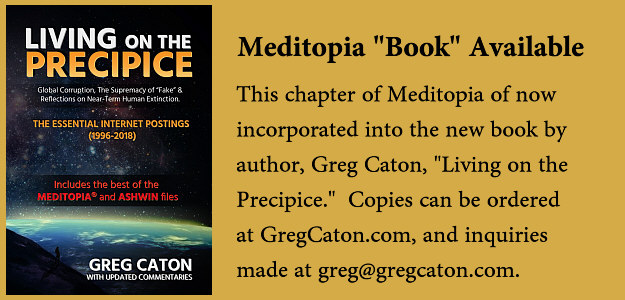
Chapter 6:
Primitive Medicine

Simple, Effective Systems of Healing Would
& Could Not Prevail Under the Current GCOS
 "Occasionally, begrudging recognition is given the fact that the
Indians taught the early arrivals to these shores what to eat,
how to farm, and how to survive in the harsh, cold woods.
And nowadays, because of the recent work of groups
attempting to protect the rainforests of the world, we are hearing
about forest Indians' knowledge of medicinal plants. We are beginning
to grasp that modern pharmacology is rooted in the ancient knowledge
of forest plants, and that we have barely begun to tap the Indians'
full knowledge of these matters. And yet that knowledge is on the verge
of being totally lost as the forests are destroyed and the Indians
are killed or removed from their lands."
"Occasionally, begrudging recognition is given the fact that the
Indians taught the early arrivals to these shores what to eat,
how to farm, and how to survive in the harsh, cold woods.
And nowadays, because of the recent work of groups
attempting to protect the rainforests of the world, we are hearing
about forest Indians' knowledge of medicinal plants. We are beginning
to grasp that modern pharmacology is rooted in the ancient knowledge
of forest plants, and that we have barely begun to tap the Indians'
full knowledge of these matters. And yet that knowledge is on the verge
of being totally lost as the forests are destroyed and the Indians
are killed or removed from their lands."
Jerry Mander
1
(emphasis added)
 "Intuition from traditional science and mathematics
has always tended to suggest that unless one adds all sorts
of complications, most systems will never be able to exhibit
any very relevant behavior. But the results so far . . . have
shown that such intuition is far from correct, and that in reality
even systems with extremely simple rules can give rise to
behavior of great complexity . . . (this) implies that there
is never an immediate reason to go beyond studying systems with
rather simple underlying rules."
"Intuition from traditional science and mathematics
has always tended to suggest that unless one adds all sorts
of complications, most systems will never be able to exhibit
any very relevant behavior. But the results so far . . . have
shown that such intuition is far from correct, and that in reality
even systems with extremely simple rules can give rise to
behavior of great complexity . . . (this) implies that there
is never an immediate reason to go beyond studying systems with
rather simple underlying rules."
Stephen Wolfram
2
 "The fascinating feature of primitive medicine is that
it represents a medical system utterly different from
our own, yet one that functions satisfactorily."
"The fascinating feature of primitive medicine is that
it represents a medical system utterly different from
our own, yet one that functions satisfactorily."
Erwin H. Ackerknecht, M.D.
3
 "The believer in truth . . . is bound to maintain
that the things of highest value are not affected
by the passage of time; otherwise, the very concept
of truth becomes impossible . . . (Nonetheless) let us
remember all the while that the very notion of eternal
verities is repugnant to the modern temper."
"The believer in truth . . . is bound to maintain
that the things of highest value are not affected
by the passage of time; otherwise, the very concept
of truth becomes impossible . . . (Nonetheless) let us
remember all the while that the very notion of eternal
verities is repugnant to the modern temper."
Richard M. Weaver
4
 hile imprisoned in Beaumont, I happened
to be introduced to a Native Indian from Mexico. He was from
the Carro tribe that lives in the Sierra Occidentál where the
states of Nayarit and Jalisco meet. He described the place as
quite indigenous -- where Mexican "Federales" knew better than to
meander. (As he said this to me he drew a pointed index finger from
one side of his throat to the other.) "The land is not their home.
It is ours."
 At the time, I spoke little
Spanish, and my Carro friend spoke no English -- (only his indigenous
tongue, first; and then secondly, Spanish.)
 When I brought up the subject
of native medicine, "Juan" was always decisive on any given treatment.
He knew the plant, insect, or in the case of deadly snake bites, the
excrement, that was used, the protocol, contraindications -- not to
mention extensive stories of anecdotal case histories.
 "You are a doctor . . . or
shaman?," I inquired, very early in our relationship.
 "No," he replied. "There
are many people in my tribe who know these things."
 "And what do you do if you
need to use a white medical doctor?" I then inquired.
 "Except for traumatic
accidents, that is almost never,"
he replied. "Our medicine works better."
 One of the most remarkable
things about living in a place like Ecuador -- where indigenous
ways have not been entirely exterminated, and in many ways are
actually cherished, is you get to see -- firsthand -- the effects
of authentic shamans. The common people have access to knowledge
of their environment sufficient to sustain basic good health,
but there is a level above that, which seeks to sustain not just
the physical well-bring of members of the tribe, but the psychological,
emotional, and spiritual well-being, as well. The shaman practices
his craft openly -- using emulets, herbs, encantations, etc.
No secrets. No patented medicines. The authentic shaman doesn't
even charge for his services ... but, from what I have observed
in the Amazon, lives largely on the voluntary donations of what
his fellow man -- (the word "patient" here seems ill-fitting) -- provides.
 This is the all-encompassing role of the shaman.
 You must seek
them out, of course -- because
none of the effective shamans I have met are given to catering to
tourists. In fact, nowadays, it is common to find charlatans among
those claiming to be shamans. Common, yes . . . but
the "real deal" is there for those who seek with sincerity,
a pure heart, and an open mind.
In one of John Perkins' books, he discusses his
eyewitness account of a 103-year-old Otavalan shaman and his
miraculous healing powers. He even records his experience in
watching someone brought back from the dead.
[ 5]
 I have seen authentic
shamans in action, and I can boldly attest to their healing abilities.
They are not systems of recent development. To speak to the shamans
of South America of their traditions, they will tell that they
are the purest, modern representation of ancient
medicine. They are the true representatives of ancient systems
of healing that are our birthrights -- birthrights that, I believe,
were forsaken with the executed unfolding of our current GCOS.
 I have read the
antiseptic and sterilized accounts of paleopathology and
paleomedicine, which attempts to take archeaological accounts
of ancient medicine, pass them through the rubric of modern
science, and produce an accounting of worthless "wannabe"
medical practice. [ 6]
I could give more credence to orthodox
accounts if I had not witnessed such shocking attempts to
suppress scientific truth in my own time.
 I am a living,
breathing person. So are my associates. We have worked with
thousands of people and cured diseases -- primarily cancer --
that orthodox physicians had claimed were hopeless. If
the orthodox establishment can do such an effective job
of squelching what I know . . . if they can suppress an
effective cancer cure that was actively PUBLISHED as such
in 1858, what power do they have over cultures, peoples,
and archeological sites that passed on thousands of years
ago? At least I have some limited ability to speak and write.
I can talk to people. I can photograph results and reproduce
hundreds of testimonials. What power, in this "land of the
living" do ancient cultures have -- aside from their descendents
in the shamanic community -- where no one is present
who can know fully what they knew and represent their knowledge
as relevant in our own time?
 I open this chapter by
recounting my experience simply because if we draw from strictly
orthodox accounts -- and, by now, I would assume that most of
my readers have noticed my propensity for bibliographical support --
we must take into account the bias that all modern, authoritative
sources have built into their story-telling -- because, as we
saw in the last two chapters, our historical accounts are brimming with
breathtaking levels of fudging. After all, no "respectable" historical
accounts are allowed to travel far from the all-consuming, centripetal
force of the common narrative.
 Truly, we have not strayed far
from Hobbes' portrayal of the lives of primitive peoples as
"nasty, brutish, and short." And yet, contrary to the way in which
indigenous peoples are portrayed -- in any aspect of their lives,
including health care -- I am always struck by how relatively
"satisfied" they are. It reminds me of famous comment by Richard Weaver, in the best
known work of his trilogy:
 " . . . modern man has not defined
his way of life . . . (so) he initiates himself into an endless series
when he enters the struggle for an 'adequate' living. One of the strangest
disparities of history lies between the sense of abundance felt by older
and simpler societies and the sense of scarcity felt by the ostensibly
richer societies of today. Charles Péguy has referred to modern man's
feeling of 'slow economic strangulation.' his sense of never having enough
to meet the requirements which his pattern of life imposes on him. Standards
of consumption which he cannot meet, and which he does not need to meet,
come virtually in the guise of duties. As the abundance for simple living
is replaced by the scarcity of complex living, it seems that in some way
not yet explained, we have formalized prosperity until it is for most
people only a figment of the imagination . . . "
[ 7]
 The majority of works
I have read on the history of medicine -- and I have polished
off over a dozen -- can firstly be
broken down into two sections: primitive medicine and
"civilized" medicine. The first one or two chapters is
devoted to the primitive -- paleomedicine, paleopathology,
perhaps some space to early ethnobotany, etc. The bulk
of the remainder goes to "civilized development."
[ 8]
 Great effort is made
to construct a smooth, linear history -- such that time,
progress, and technical achievement are overlaid in perfect
conjunction. That this approach appears to be universal
does not surprise -- after all, it utilizes the myth of
unending, linear progress in our time that was set in motion
by Francis Bacon, refined with contributions by Descartes
and Newton, and sealed with the evolutionary principles
of Darwin and commentaries of Herbert Spencer.
[ 9]
 No one questions this
because these are the evolved rules of the game -- or,
again, as Kuhn notes, scientists in any era (and, apparently,
those who write about them)
ply their craft like a chess player. They are allowed to construct
endless strategies for winning the game as long as they
don't question the underlying game rules.
[ 10]
 Contained within this approach,
however, is a huge deception. By measuring medical advance
through chronology, the earliest systems of human health care ---
those which are, yes, the simplest, but also the most time-tested,
the most employed as a result of empirical observation -- are
unwittingly castigated as elemental and unworthy of serious
consideration by the modern mind. Such prejudice is embedded
in the etymology of the very words used -- "primitive" meaning
"first born" (L. "primitivus") and "civilized" referring to
urbane citizens (L. "civilis"), as opposed to soldiers, foreigners,
and . . . as if it needs repeating, savages.
 What is missed is the
homogeneity and striking efficacy of ancient systems, some of which I have used
myself -- acquiring them, as I have, as a result of first
travelling to, and then living in
close proximity to, the Amazon rainforest -- home to over 80,000
species of plant life. Here, you find
shamans who have used the very same effective methods, formulas,
and practices for countless generations. Therein is the real
difference. The modern mind is immediately outraged by this
apparent disonance. After all, how could medicine be effective
unless it was progressing? It has to progress! After all,
you can't have excellence in any field without progress, can you? You can't
have progress without change. But then you can't embrace change
as a critical component of progress
without an unwitting refusal to accept universal verities.
(Such a worldview consistently overlooks the obvious throughout
Nature. Natural healing is instinctual in higher life forms.
Even Garrison, an outspoken critic of primitive medicine
in his own treatise, noted that "a dog licks its wounds,
hides in holes if sick or injured, limps on three legs if maimed,
tries to destroy parasites on its body, exercises, stretches,
and warms in the sun, assumes a definite posture in sleeping,
and seeks out certain herbs and grasses when sick." One
requires a "modern temper" to not see that primitive medicine
follows along the same lines that other fellow mammals have
been following, with surprising success, for millions of years --- unchanged.
When Garrison continues, quoting John Burroughs, he fails to grasp
the full meaning of his observation. "Man has climbed up from
some lower animal form, but he has, as it were, pulled the ladder
up after him.")
[ 10b]
 It is an uncontestable
fact that the modern mind is at odds with the notion -- again,
to borrow from Weaver, that "the things of highest value are
not affected by the passage of time." As recent as the age
preceeding the Enlightenment, the possessor of highest learning
was still thought to be the "philosophic doctor." Such an
individual "stood at the center of things because he had mastered
principles. On a level far lower were those who had acquired
only facts and skills. It was the abandonment of metaphysics
and theology which undermined the position of the philosophic
doctor, a position remarkably like that prescribed by Plato
for the philosopher-king. For the philosophic doctor was in charge
of the general synthesis. The assertion that philosophy is queen
of studies meant more to him than a figure of speech; knowledge
of ultimate matters conferred a right to decide ultimate questions."
[ 11]
 So it is in the world
of practicing shamans, whose practices and concepts are shockingly
similar all around the world.
[ 12] Despite their diminishing
numbers and the manner in which their world has been diluted and
poisoned by the encroachment and dominating influence of
our GCOS's winning strategy, we see in the authentic practitioners
the blossoming of the philosopher-king -- a political concept
to Plato, but a living reality to those indigenous communities that
have not yet lost their way in the torrential undertoe of modernity.
More importantly, we see a kind of wholeness that is almost
incomprehensible to the modern mind -- whose more objective
anthropologists have attempted to define
the healing shaman with a smorgasborg of specialized terms, functions,
and corresponding occupational name tags: composite physician,
pharmacologist, psychotherapist, sociologist, philosopher, lawyer,
astrologer, priest, and creator of tribal order.
[ 13]
 Modern science cannot view
the shaman in his wholeness, because its very act of observing and
interpreting what he is requires that the study itself be filtered
through the psychotic, fragmented filter that is born of a
genetically-altered, artificial world we call Modern Civilization.
This, in turn, is nothing more than our GCOS run out 200 or 250
or 300 generations (as if an exact number really matters),
and observing the manifest results of the winning
(i.e. dominant) strategy (i.e. sub-culture).
 This is not a
critical excoriation of "division of labor."
Even the smallest indigenous peoples exercise
division of labor. It's the unavoidable denotation
of "division of mind" -- one rooted in artificial constructs
leading to an artificial world that is at war with
the Nature that gave it birth. It is a worldview
that is an early manifestation of the greed and selfishness at the
heart of the opening lines of our GCOS.
It is the basis for our experience of "the bicameral mind."
[ 14]
It is the foundation for a modern medical system that creates
more disease than it could ever eradicate -- and how can it be otherwise? --
if disease is the manifestation of maladaptation, and modern
civilization (i.e. the current winning strategy) is inherently
maladaptive to Nature, what else should we expect?
It is the basis for Seattle's comparison of our
winning strategy (i.e. white man) to a "snake who eats
his own tail in order to live. And the tail grows shorter
and shorter." (Modern man seems surprised that the
snake is quickly approaching the consumption of its
own head . . . Indigenous people I know are not.)
 We see how this "division
of mind" must -- by its very nature -- ultimately glorify those systems of
health care that best serve bifurcation: make the most money
(i.e. energy -- the power to "do" in the physical world)
for those most committed to the fragmented, Luciferian side of the
bicameral mind, while simultaneously doing whatever is
necessary to suppress wholeness.
 Until recently, the unanimous
"civilized" view of the common practitioner of "primitive" medicine, as represented
by the shaman, was that the entire lot were "neurotic, epileptic, psychotic,
hysterical, or schizophrenic." Such is our modern world's view of a
practitioner who would cure his "patients" through the knowledge and
insights of non-locality gained through "altered states" --
eschewing the aid and assistance of a corporately-produced and
funded Physicians' Desk Reference (PDR).
[ 15] The common view of anthropologists
is best summed up by George Devereux, an authority on the matter, "In brief,
there is no reason and no excuse for not considering the shaman as a severe
neurotic and even a psychotic. In addition, shamanism is often also
culture dystonic . . . Briefly stated, we hold that the shaman is mentally
deranged."
[ 16]
 Less pejorative descriptions and
portrayals of shaman have been developed in the past four decades, but as
Narby notes, "the difficulty in grasping 'shamanism' lies not so much in
the concept itself as in the gaze of those who use it. The academic analysis
of shamanism will always be the rational study of the nonrational -- in other
words, a self-contradictory proposition or a cul-de-sac."
[ 17]
 Even when the powers of shamanism
are confirmed through the work of other disciplines, modern academics don't make
the connection. I remember one passage by Russell Targ, one of the celebrated
developers of 'Remote Viewing,' which had original backing by the U.S.
Central Intelligence Agency. He discusses at some length the "amazing"
developments in "intuitive medical diagnosis" and "distant healing" that are
now offspring of this extensively researched psychic phenomena.
His writing -- and those he references in his book -- do little to nothing
to make clear that these modern, scientific discoveries are but a crude
re-hashing of a handful of shamanic techniques that have been in regular
practice for untold thousands of years.
[ 18]
 This, in turn, is but a subset of
a larger pattern of denial wherein modern technology draws vitality, creativity,
and sustinence from "the primitive," only to denigrate or ignore it in turn.
"Seventy-four percent (74%) of the modern pharmacopoeia's plant-based
remedies were first discovered by 'traditional' societies -- (and yet),
only two percent (2%) of all plant species have been fully tested in
laboratories, and the great majority of the remaining 98 percent are
in tropical forests -- the Amazon, alone, home to half of all the
plant species on Earth -- [much of which as been decimated over the
past century to make more land for cattle and monocultural food crops]."
 This mindset is not newly developed.
The very first Materia Medica Americana, published in Latin
in 1787, was the work of Dr. Johann David Schöpf. He came
to America as a physician with German troops in the British service
during the Revolutionary War. He remained thereafter to catalogue
more than 400 medicinal plants and therapeutic substances. A close
examination of Materia Medica Americana reveals that America's
first pharmacoepia was an aboriginal materia medica. Rather
than give credit for the source of this medicinal largesse,
Schöpf makes it a point to criticize the very source that is
the basis for his work: "(In the matter of Indian remedies) I see no
reason to expect anything extraordinary or important, and I am almost
certain that with the passage of time nothing will be brought to light."
[ 19] The author of America's first
materia medica leaves his readers with the proposterous notion
that he most probably figured out all his information on his own.
 The social, political, and
financials goals behind such denigration, stolen authorship,
and overlooked potentialities
have not been without
transparency -- "(for only) after we have thoroughly routed the medicine
men from their intrenchments and made them an object of ridicule
(could whites) hope to bend and train the mind of our Indian wards
in the direction of civilization."
With this savage attack on native
healing systems, it is no wonder that as early as the 1850's,
Henry David Thoreau would write, quoting a "wise, old Indian,"
that "the present generation of Indians had lost a great deal"
[of practical medical knowledge]. [ 20]
 Declaring war on the natural
world is the only way in which modernity could have possibly have held
victory over sub-cultures which did not possess the "winning strategy"
under the current GCOS. How could sub-cultures, particularly in the
area of medicine, endure when they exhibited "general readiness to produce,
without reward, their manifold roots, barks, and herbs for the (relief)
of those needing aid . . . they show at least no selfish and mercenary
views which are the commonest motives among the no less numerous
mystery-usurers of more civilized and enlightened nations."
[ 21]
 To see this development
with more clarity, we have to return
to its early lines of code.
 I maintain that the opening
lines of our current GCOS's code -- maintaining as they do, a rigidity
in separateness between "I" and "not I"; "mine" versus "not mine";
and performing acts that benefit "me" as opposed to "not mine,"
can be used to explain the history of any facet of our current
civilizational era -- in this case, medicine. Run out over
hundreds of generations, our "cellular automata" produce a
"modern man (that) is suffering from a severe fragmentation of his
world picture. This fragmentation leads directly to an obsession
with isolated parts."
[ 22]
 In medicine, the first
step on the road to separating oneself from the rest of Creation
would manifest itself in the hoarding of knowledge ("authorized knowledge"
versus "unauthorized knowledge"), the creation of a medical caste
(my authoritative use of that knowledge versus those incapable of
acting without it), the development of schools to train select
candidates eligible for admittance into the caste (to separate the initiated
versus the uninitiated), and the creation of a system of practice
that favors a monied versus an impoverished patient base).
Bifurcated self thus yields a bifurcated expression in health care.
Since good health is of vital interest to any citizen in any society,
it would only stand to reason that those with some inclination to
working in the area of medicine would find a rich field in which to
help the GCOS express itself.
 Thus the doctor becomes the one
with knowledge. His patient, the one without. The doctor, teacher;
the patient, student. The doctor's opinion, an expression of authority;
the patient's opinion, an expression of ignorance.
The doctor, collecting fees for what is "mine";
his patient, the paying party who represents what is "not mine."
The relationship is not and cannot be unilateral. It is asymmetrical,
because the GCOS cannot express itself if the doctor is acting on
behalf of what is best for the patient. Drawn out to the point
of GCOS system crash, the doctor becomes torturer and the patient
is the victim.
 Medicine now must exist to
benefit itself -- represented by its high priests. Even the underlying
knowledge upon which the medical high priest relies is twisted to
conform to the "game rules" provided by the GCOS. "The excessive
love of self is in reality the source to each man of all offenses;
for the lover is blinded about the beloved, so that he judges wrongly
of the just, the good, and the honorable, and thinks that he ought
always prefer his own interest to the truth."
[ 23]
 If the lines of code we have
chosen for the GCOS are correct, we should see a consistent, increasing,
unyielding movement in this direction over time -- over the last six,
or eight, or ten thousand years since it was first set into motion.
 And using the information provided
by conventional history itself -- self-serving though it be -- it should
surprise no one that as we leave primitive medicine for its "civilized"
variants, that is precisely what we see.
- Jerry Mander,
In the Absence
of the Sacred, p. 230.

- Stephen Wolfram,
A New Kind of Science,
p. 110.

- Erwin H. Ackernecht, M.D.,
A Short History of
Medicine, p. 10.

- Richard M. Weaver,
Ideas Have Consequences,
p. 52-53.

- John Perkins,
The World is as You Dream It.
p. 88-95. On the shamanic power to bring people back from the dead: 71-74.

- Lois N. Magner,
A History of Medicine,
p. 1-13. Examples abound . . . so I will pick just one:
Magner closes her opening chapter on early medicine with the following
(excerpted):
"we should remind ourselves that the ingredients in many traditional remedies
are so exotic, nauseating, or toxic that the prescriptions were more likely
to scare people out of their illness than to cure them. When faced with
the choice of consuming 'boiled black bugs and onions,' or pleading guilty
to good health, many marginally ill patients must have chosen the latter course . . .
(the) vestiges of these actions remain in the "old wives' tales" told by
people entirely too sophisticated to believe such stories any more than
they would worry about a broken mirror or Friday the thirteenth."

- Weaver,
Ideas, p. 14-15.

- Sahlins,
Evolution and Culture, p. 36.
In noting the study of cultures as integrated into the Darwinian mindset,
he notes, "The social subsystem of cultures is especially illustrative of
progress in organization, and it is often used to ascertain general
evolutionary standing. The traditional and fundamental division of culture
into two great stages, primitive and civilized, is usually recognized as
a social distinction: the emergence of a special means of integration, the
state, separates civilization from primitive society organized by kinship."

- Rifkin,
Entropy, p. 19-29.

- Kuhn,
The Structure of
Scientific Revolutions, p. 144-145

--- 10b --- See Garrison's
History of Medicine, p. 19.

- Weaver,
Ideas, p. 53.

- Eliade, Mircea,
Shamanism:
Archaic Techniques of Ecstasy, p. 50

- Narby, Jeremy,
The
Cosmic Serpent: DNA and the Origins of Knowledge,
p. 14-17.

- Jaynes, Julian,
The Origin
of Consciousness in the Breakdown of the Bicameral Mind, p. 84-99.
I could do an entire chapter on my proposed modifications to
Jaynes' work, but sufficient to state, for the purposes of
keeping within the confines of this chapter's subject matter,
that Jaynes' "executive part" and "follower part" -- the
components of the "bicameral mind" -- are, in my opinion,
rooted in the bifurcation of the part of us which seeks
unity with the Whole and the sequestered, fragmented part
of us that is the universal meme created by our current GCOS.
Using language with which Christians are accustomed,
acquainted, and comfortable, we might call this the
Higher and Lower Selves. Using language with which
psychiatry is acquainted we might call this the Super Ego
and the Ego.

- Narby,
The Cosmic Serpent,
p. 15. With four bibliographical citations of support, p. 167.

- Ibid., p. 15. Running commentaries on the sick state of
ancient practitioners of medicine -- regardless whether the term "shaman," or
"medicine man" or "indigenous healer" is used -- abound. Indeed, they are too numerous
to list fully. A typical example is one provided by Albert Buck, who characterized
the genesis of early "medicine men," as occurring when "some member of the tribe
who had displayed special skill in the treatment of disease, and who at the same time
was liberally endowed with the qualities which characterize the charlatan,
was chosen . . . (The Growth
in Medicine, p. 8., emphasis added).

- Ibid., p. 18.

- Targ, Russell,
Limitless Mind: A Guide to Remote Viewing
and Transformation of Consciousness, p. 105-150 . . . Once again, this level
of arrogance -- to refer back to
a passage from Chapter 4 -- reminds one of
the historical robe used to dress Christopher Columbus -- "discoverer of America" --
as if anyone could claim to "discover" a land where 55 million people have
already been living for countless generations. This great, historical tribute
is given to a man who, to quote native American activist, Russell Means, whom
I met at a "wisdom gathering" in Sedona, Arizona (May, 2006): " . . . thought
he had found India. You cannot be on this planet and be more WRONG than
to think you have found a place, whose true location
is on the opposite side of the globe!"
I mention this because if it emblematic of the convoluted mindset used by modernity
to denigrate the primitive.

- Narby, ibid., p. 38. Bibliographical support: p. 170;
the passage on Dr. Schöpf from p. 66.

- Vogel, Virgil,
American Indian Medicine, p. 35.
Comments on Henry David Thoreau, p. 119.

- Ibid., p. 67, quoting from "Travels in the Confederation
(1783-1794). ed. Alfred J. Morrison, I, 284-87.

- Weaver,
Ideas, p. 59.

- Ibid., p. 71. Weaver takes the quotation from Plato.

- Tainter,
The Collapse of Complex Societies,
p. 59.

|
"Our lips shall tell them to our sons,
And they again to theirs . . .
That generations yet unborne
May teach them to their heirs."
Isaac Watts
(1674-1748)
|
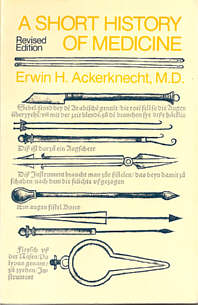
 A wide variety of
texts exist which provide a brief overview of the history
of medicine. Some are encyclopedic and daunting (Garrison
Fielding's Introduction
to the History of Medicine comes to mind).
 In the end,
I choose A Short History
of Medicine by Erwin H. Ackerknecht, M.D., as a
chronological guide for the balance of Book II of
Meditopia. Although not as detailed -- and certainly
filled with conventional views that are not consistent
with my own views, it, nonetheless, provides a comprehensive,
yet succinct, overview of the most important developments
that mark the history of medical practice.
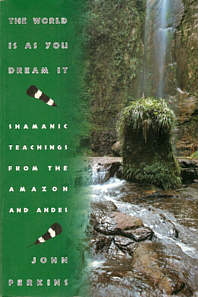
 John Perkins is, of late,
better known for his writings in the political arena.
Confessions of an Economic Hitman
made him an international celebrity, a darling of those
opposed to the excesses of U.S. foreign policy, and placed
him in the same league as Noam Chomsky and William Blum.
 But his earlier work,
much of it drawn from his earlier experiences in the shamanic
community in Ecuador, is, in my opinion, more valuable.
 The World Is As
You Dream It
The World Is As
You Dream It is as good a narrative as any of one who is
introduced to authentic shamans and finds, much to his surprise,
that they possess healing abilities that modern medical
practitioners do not understand, let alone attempt to
duplicate.
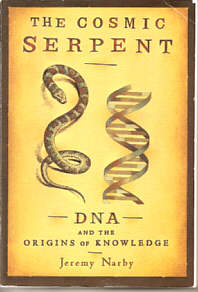
 I remember the first time
I went on a shamanic journey: the night of August 25, 2006 in
a forest retreat in Ecuador . . . I was 50 years old.
 There were many revelations that
came to me that night, but one thing I realized with surprising
clarity: there was such an abundance of snakes -- appearing in
such concrete vividness with a life all their own, that I realized
that if there were no snakes on earth, not now and not in any
time in the past -- if I had never heard of them, even in
fiction -- if I had never had any contact, through any of my
senses, with anything that even looked like a snake -- they would
still exist in the Universe. They must stand for some kind of
universal archetype. They are, after all, even found prominently
on the ancient caduceus, symbol of medical practice.
 It would appear that I am
not the only one who has had this revelation. Narby makes
clear in his work that he, too, recognizes how unseemly
an ever present visitor this universal archetype is to
the sincere participant in the ayahuasca ritual.
 Users with many
more years of experience with ayahuasca than I report
its sacred place as a "plant teacher." I have met with
three shamans in the Orientál of Ecuador who claim that
their entire body of botanical knowledge came from the
spirit world. What makes this a remarkable statement is
that these same teachers could acquire indigenous medical
knowledge from their elders. But it would not be the same.
To learn from a "teacher plant" is to be on the path to
"owning the knowledge." The knowledge you acquire from others
is not the same as the knowledge you acquire from within yourself.
(I discuss this aspect of ayahuasca in Chapter 4, Section 3 --
in the second paragraph of Footnote #22.)
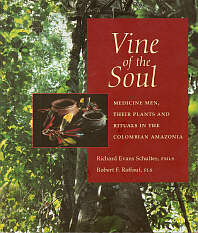
 This book,
Vine of the
Soul: Medicine Med, Their Plants, and Rituals in the Colombian
Amazonia, was written by two
of the most respected ethnobotanists of the 20th century,
Richard Evans Schultes (1915-2001) and Robert F. Raffauf
(1916-2002). I know from a mutual friend that Schultes,
in particular, became quite engrossed in the properties of
ayahuasca towards the end of his life.
 Although the focus on the
book is the Colombian Amazonia, the section on ayahuasca, from
my experience, relates to many indigenous, botanical cultures
running from Colombia south through Peru.
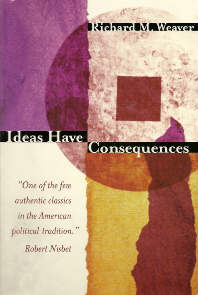
 Ideas
Have Consequences Ideas
Have Consequences is the first in a trilogy of books that
Richard M. Weaver wrote from 1948 to 1964. His thoughts
play prominently in the development of Meditopia.
 This chapter
draws heavily from Chapter 3, "Fragmentation and
Obsession," which is, in this author's opinion,
the most important of the book.
 While Weaver does a suberb
job of identifying the ills of Western civilization, I found
his recommendations less than satisfying. Absent an understanding
of our GCOS, one may swoon endingly about solutions to the current
malaise so well described by John Zerzan,
but this is the point: there is no solution, simply because an
unintended consequence of our GCOS, something built in to the
very opening lines of its code, is our own self-destruction
and the demand for an Operating System rewrite.
 This becomes
glaringly apparent in later chapters.
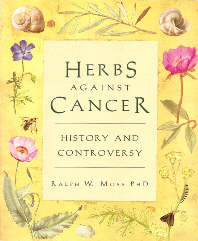
 Ralph Moss's
Herbs Against
Cancer: History and Controversy contains a variety of
simple relics of "primitive medicine." It includes chapters
on the work of Harry Hoxsey (Chapter 5), Essiac (Chapter 7),
both of which we explore herein in Chapter 4,
escharotics (Chapter 6), and it closes with an afterword
(p. 275-277) well worth reading on the life of Jonathan L. Hartwell, the
patron saint
of Alpha Omega Labs.
 Consistent with the legal
and political milieu of our time, the author opens with
a strongly worded "Important Note to Reader" -- basically,
a disclaimer stating that the author's work is for "historical
and critical analysis" only. "It is not a book of
instructions for cancer patients on how to treat themselves . . .
it would be tragic if any reader were to misunderstand the author's
or the publisher's intentions and attempt to use such information
to self-medicate for any indication or condition . . . "
 Tragic, indeed.
 I can attest to the
effectiveness of many of the formulas and methods stated in
Moss's book -- and I have no doubt that many of Moss's readers
know the game . . . namely, that there must be a wink and nudge
when discussing any aspect of cancer treatment that would
or could conceivably be used to direct market share away from
the orthodox cancer community. Hence, the author's hearty
admonition, "Readers with cancer should seek out the help of
skilled oncologists, other physicians, and trained herbalists."
 Well . . . I suppose
one out of three isn't bad . . .
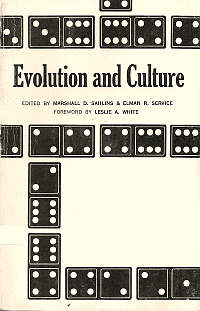
 Evolution and Culture
Evolution and Culture (1960)
stands as one of the 100 most influential books in the development of
Meditopia. It was the author's first exposure to
Elman Service's "Law of Evolutionary Potential," which
plays an important role in a later chapter. The book
(at a mere 131 pages) is a compilation of four essays
presenting the editors thoughts on evolutionary theory
as applied to cultural anthropology. Some observers
may find it contradictory that this author would embrace
a system of thought that leans towards linearity -- even
within cultural anthropology -- not recognizing that
even within a multiverse that churns in endless,
repetitive rise and falls, there can be "subroutines"
that demand progress and development, and create the
"appearance" that such upward movements can be traced
in a straight line back to the beginning of the universe. (Do we not live
in a world where entropy [the rule of the Second Law
of Thermodynamics] co-exists with laws where order
is sought at the expense of chaos?)
 The relevance of this
book to the current chapter centers on David Kaplan's
"Law of Cultural Dominance" -- which can be summed up
as such: " . . . that the cultural system which more effectively
exploits the energy resources of a given environment will
tend to spread in that environment at the expense of
less effective systems." Parallel to this a central principle
of cultural anthropology, that "thermodynamically more
versatile (cultures) . . . effective in a greater variety
of environments . . . are able to drive out less advanced types."
I maintain that this is the governing rule under our GCOS,
but, regardless, the implication for primitive medicine is
unmistakeable. As Kaplan points out himself, "The great
reduction through recent millennia of the hunting and
gathering societies of the world is a good case in point.
Once the sole occupants of the cultural scene, they have
tended to recede before later types that utilized new
and more varied means of harnessing energy and putting
it to work. The spread of these more advanced forms has
pushed the hunting and gathering cultures deeper and
deeper into more marginal areas." (p. 74).
 Kaplan's emphasizes
that "dominance," in this instance, relates to command
over the environment. "(This law) underlies the fact that
generally higher cultures have greater dominance range
than lower forms, which is to say that it is also relevant
to the understanding of general dominance. Higher forms
characteristically exploit more different kinds of resources
more effectively than lower; hence, in most environments
they are more effective than lower, thus their greater range." (p. 77)
 Applied to primitive medicine,
we see how the "Law of Cultural Dominance" has corrupted and perverted
health care within the presiding GCOS. Once again, the human body
is an artifact of nature -- not technology. The healing systems,
approaches, techniques -- indeed, entire modalities -- that work
best are those that tend to be simple and most removed from the
artificial creations of a dominant culture.
 Interestingly, Kaplan doesn't
omit the primary method that is used by a "dominant culture" to
kill off the competition: "It would seem, then, that the spread of
a dominant culture type almost invariably involves some sort of
pressure being brought to bear on less advanced types. Often this
pressure takes the extreme form of outright military conquest
[i.e. think U.S. Food & Drug Administration and their military
style tactics -- all of which this author observed close up]
with the conquered society being exterminated, driven off,
or colonized and transformed. The mechanics of this process
are easily understood. In most cases, an advanced cultural
system can marshal a greater and more powerfully equipped
military force, enabling it to take, and hold against encroachment
or revolt, areas where its exploitative techniques are more effective
than rival systems." (p. 88)
 But the mechanism beneath
THIS one -- the real source of this power to suppress, if not
exterminate -- is something Kaplan never advances, and yet, even to
this point in our study, it is obvious to all.
 Money. Money.
 If the most effective methods
of healing tend to be simple, inexpensive, easy to learn, easy to share,
easy to employ, then what must an orthodox medicine system do within the dominant culture
to eradicate these effective methods and fuel the source of their
exterminating power (i.e. money)?
 They must: (1) create less
effective, artificial systems that play to the inherent asymmetrical
relationship between a Medical Elite and the majority who live and
work outside this selective group; (2) they must destroy the competition
by insuring that they use their superior resources gained through the
employment of the first principle to establish a Common Narrative that
discredits primitive medicine; and (3) they must solidify this
disinformation through an educational system that sustains the bias
against these "lower form" healing sytems.
 Question ---- Can the "con job" that is
modern, orthodox medicine be sustained indefinitely? Question ---- Can the "con job" that is
modern, orthodox medicine be sustained indefinitely?
 Answer ---- Not on your symptom-treated,
radiation-tested, pill-popping,
toxically vaccinated, surgically-altered, chemotherapied life! Answer ---- Not on your symptom-treated,
radiation-tested, pill-popping,
toxically vaccinated, surgically-altered, chemotherapied life!
 For, orthodox medicine is cursed with the
same baggage that weighs down all complex, high entropy organizations.
"A complex society is seen as impelled along a path of increased
complexity [i.e. hence, the health care budgets of Western countries
that are currently spiralling out of control], unable to switch
directions, regress, or remain static. When obstacles impinge, it can
continue in only the direction it is headed, so that catastrophe
ultimately results."
[ 24]
|















